Bernhard U. Seeber
Fast processing explains the effect of sound reflection on binaural unmasking
Jun 30, 2021



Abstract:Sound reflections and late reverberation alter energetic and binaural cues of a target source, thereby affecting it's detection in noise. Two experiments investigated detection of harmonic complex tones, centered around 500 Hz, in noise in a virtual room with different modifications of simulated room impulse responses (RIR). Stimuli were auralized using the SOFE's loudspeakers in anechoic space. The target was presented from the front or at 0$^\circ$ azimuth, while an anechoic noise masker was simultaneously presented at 0$^\circ$. In the first experiment, early reflections were progressively added to the RIR and detection thresholds of the reverberant target were measured. For a frontal sound source, detection thresholds decreased while adding the first 45 ms of early reflections, whereas for a lateral sound source thresholds remained constant. In the second experiment, early reflections were cut out while late reflections were kept along with the direct sound. Results for a target at 0$^\circ$ show that even reflections as late as 150 ms reduce detection thresholds compared to only the direct sound. A binaural model with a sluggishness component following the computation of binaural unmasking in short windows predicts measured and literature results better than when large windows are used.
Communication conditions in virtual acoustic scenes in an underground station
Jun 30, 2021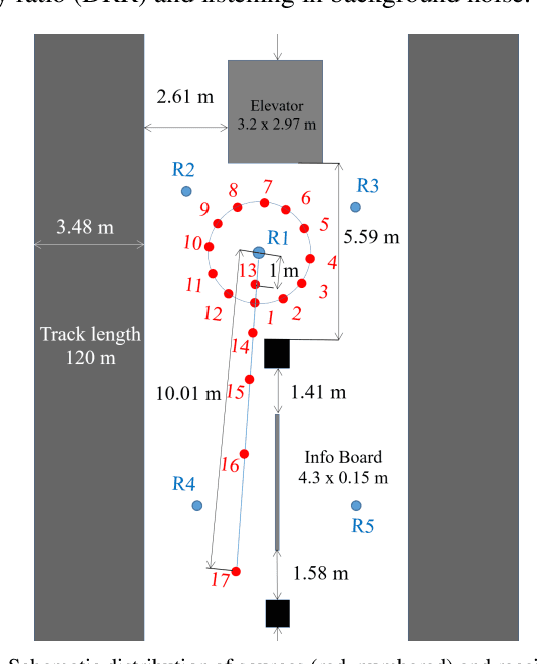
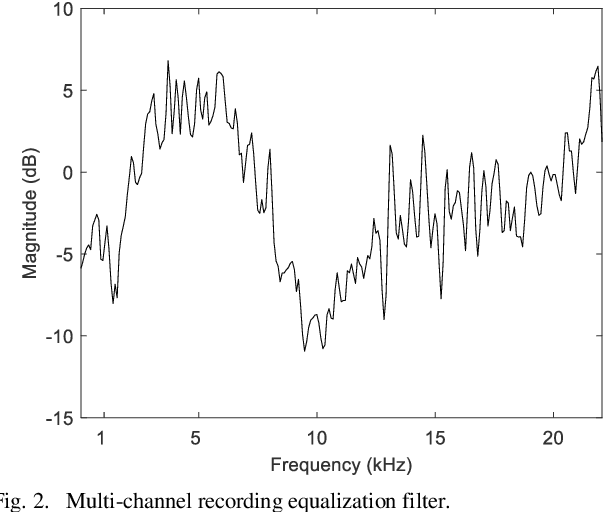
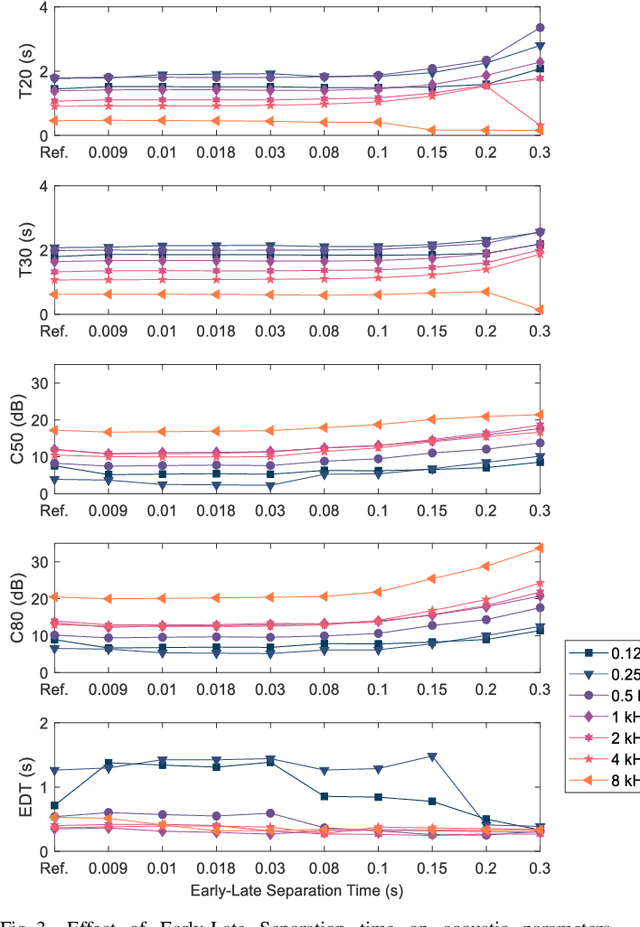
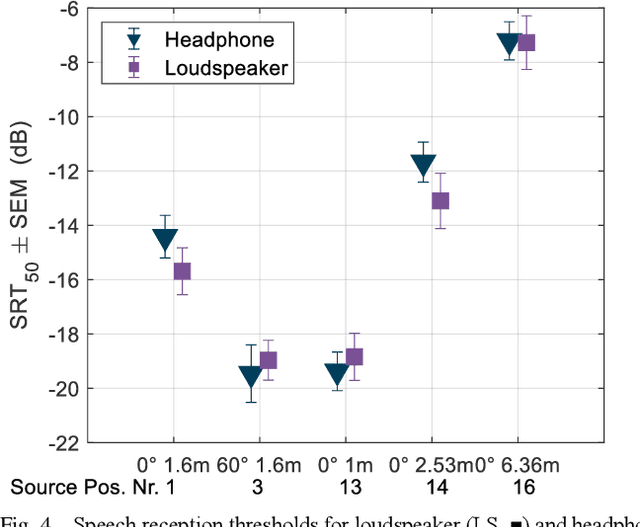
Abstract:Underground stations are a common communication situation in towns: we talk with friends or colleagues, listen to announcements or shop for titbits while background noise and reverberation are challenging communication. Here, we perform an acoustical analysis of two communication scenes in an underground station in Munich and test speech intelligibility. The acoustical conditions were measured in the station and are compared to simulations in the real-time Simulated Open Field Environment (rtSOFE). We compare binaural room impulse responses measured with an artificial head in the station to modeled impulse responses for free-field auralization via 60 loudspeakers in the rtSOFE. We used the image source method to model early reflections and a set of multi-microphone recordings to model late reverberation. The first communication scene consists of 12 equidistant (1.6 m) horizontally spaced source positions around a listener, simulating different direction-dependent spatial unmasking conditions. The second scene mimics an approaching speaker across six radially spaced source positions (from 1 m to 10 m) with varying direct sound level and thus direct-to-reverberant energy. The acoustic parameters of the underground station show a moderate amount of reverberation (T30 in octave bands was between 2.3 s and 0.6 s and early-decay times between 1.46 s and 0.46 s). The binaural and energetic parameters of the auralization were in a close match to the measurement. Measured speech reception thresholds were within the error of the speech test, letting us to conclude that the auralized simulation reproduces acoustic and perceptually relevant parameters for speech intelligibility with high accuracy.
Effect of acoustic scene complexity and visual scene representation on auditory perception in virtual audio-visual environments
Jun 30, 2021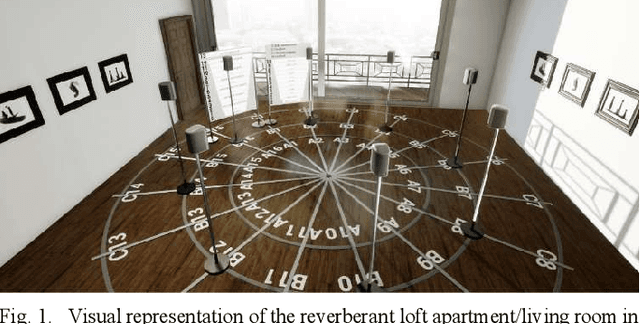
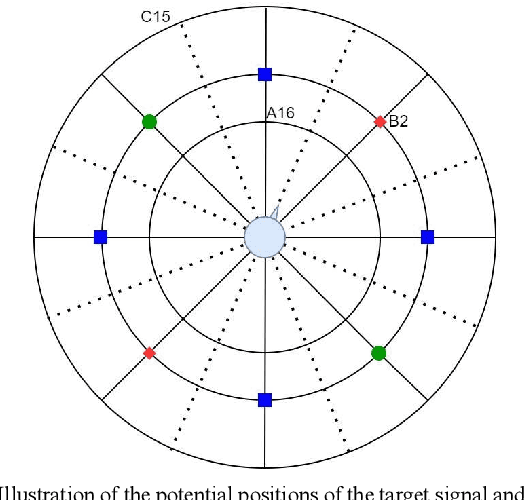
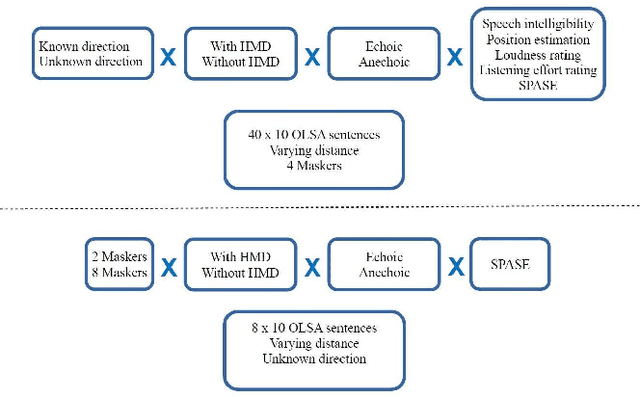
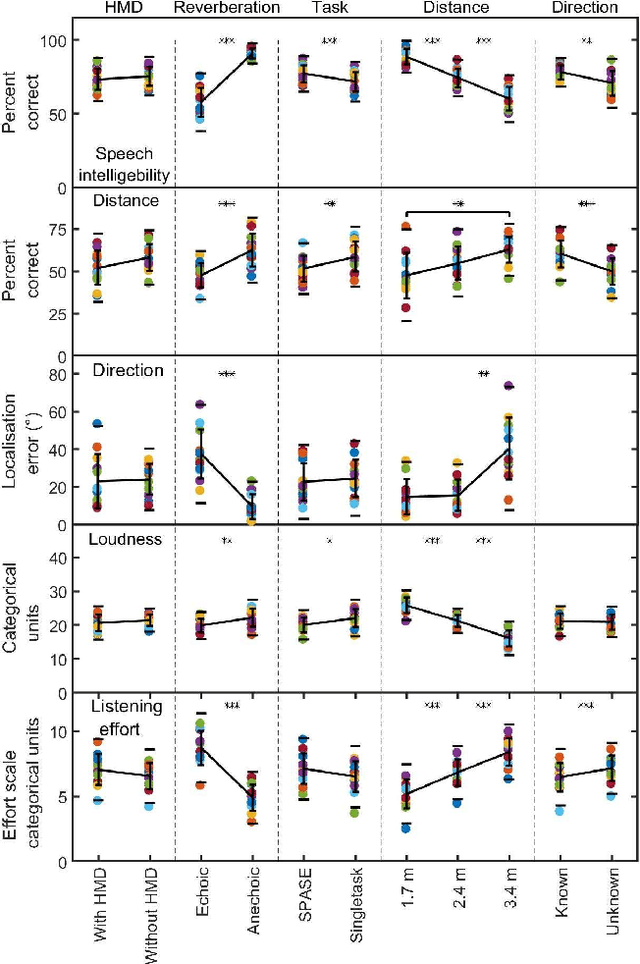
Abstract:In daily life, social interaction and acoustic communication often take place in complex acoustic environments (CAE) with a variety of interfering sounds and reverberation. For hearing research and evaluation of hearing systems simulated CAEs using virtual reality techniques have gained interest in the context of ecologically validity. In the current study, the effect of scene complexity and visual representation of the scene on psychoacoustic measures like sound source location, distance perception, loudness, speech intelligibility, and listening effort in a virtual audio-visual environment was investigated. A 3-dimensional, 86-channel loudspeaker array was used to render the sound field in combination with or without a head-mounted display (HMD) to create an immersive stereoscopic visual representation of the scene. The scene consisted of a ring of eight (virtual) loudspeakers which played a target speech stimulus and non-sense speech interferers in several spatial conditions. Either an anechoic (snowy outdoor scenery) or echoic environment (loft apartment) with a reverberation time (T60) of about 1.5 s was simulated. In addition to varying the number of interferers, scene complexity was varied by assessing the psychoacoustic measures in isolated consecutive measurements or simultaneously. Results showed no significant effect of wearing the HMD on the data. Loudness and distance perception showed significantly different results when they were measured simultaneously instead of consecutively in isolation. The advantage of the suggested setup is that it can be directly transferred to a corresponding real room, enabling a 1:1 comparison and verification of the perception experiments in the real and virtual environment.
 Add to Chrome
Add to Chrome Add to Firefox
Add to Firefox Add to Edge
Add to Edge